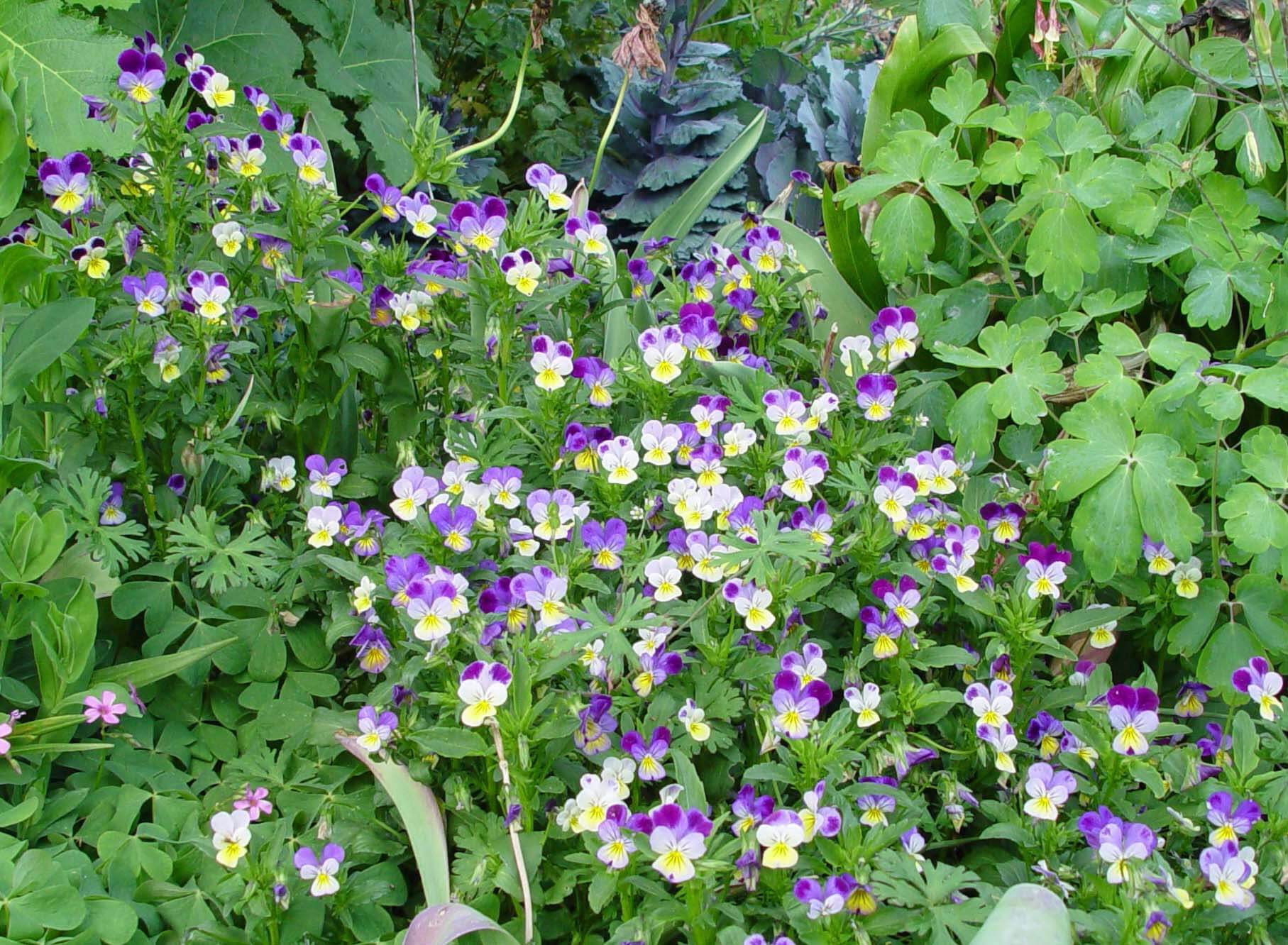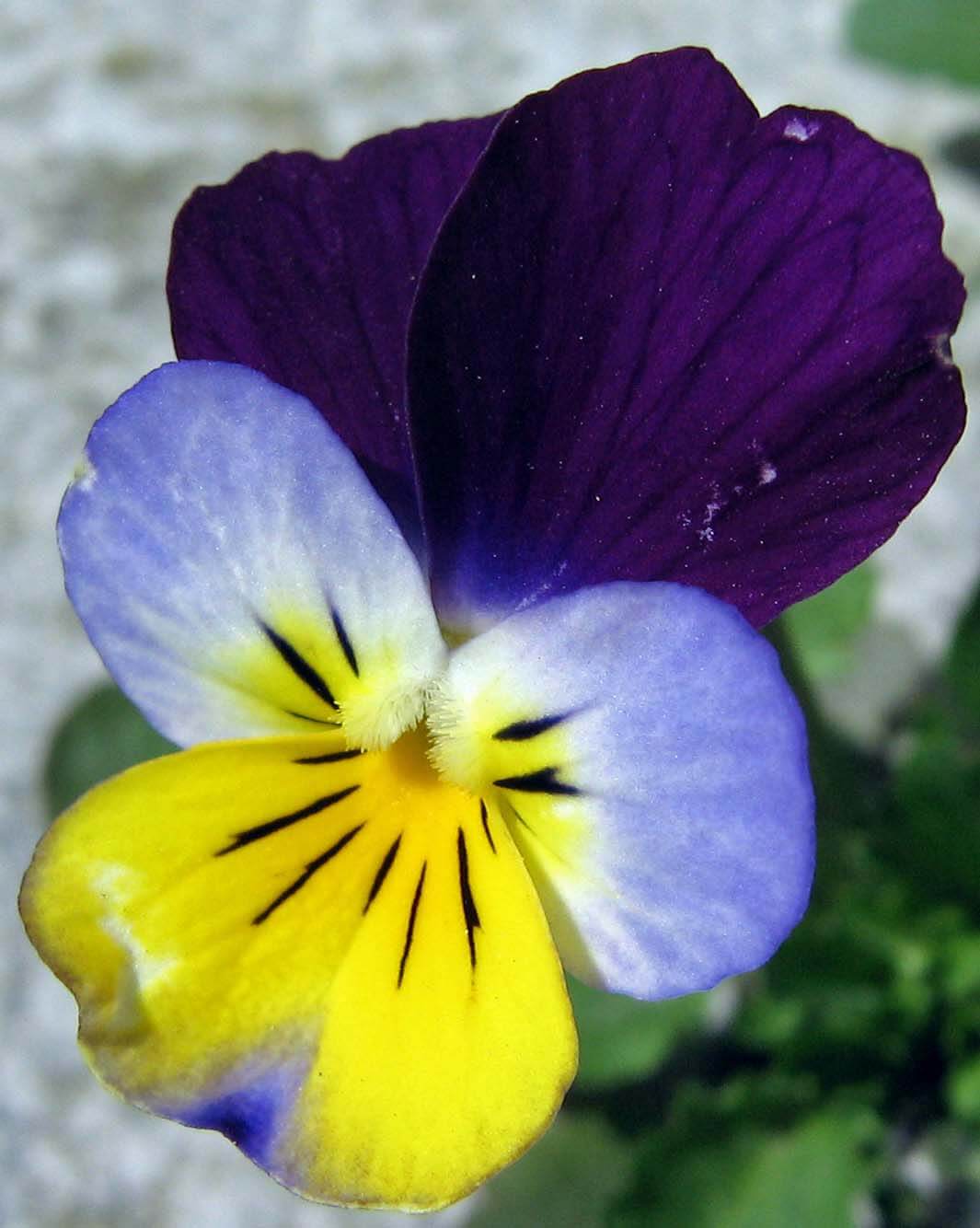
I once worked for Roger’s Gardens Colorscape, a world famous nursery that installs fabulous annual color gardens for stately homes on the southern California coast. That experience taught me how to grow annuals for two seasons. In early summer, we’d plant the traditional marigolds and petunias that love the heat. Come September, it was time to tear out all those warm season flowers and fortify the beds with compost and fertilizer before installing our cool season annual palette. Violas were a favorite for gracing our gardens with intense color all winter long.
Of all the cool-season flowers, violas work the hardest. Those closest to the original species Viola tricolor are called Johnny-jump-ups. They bear nickel-sized blooms with intense color and those beloved sweet pansy faces. These are born on loose, rangy stems that mound and cascade. Depending on the climate, Johnny-jump-ups may be annual, biennial and even somewhat perennial. Those that make it through the summer may be cut back with scissors to stimulate an autumn bloom spurt.Interest in Viola tricolor dates back to Medieval England where the delicate blossoms were admired as wayside wildflowers. They were coveted as potherbs for a favorite salad of the day made of the leaves, stems and flowers of these violas, minced onion and a dressing of oil and vinegar. In the garden, they were the traditional choice for blending with old-fashioned English pinks and sweet William.

Unlike compact hybrid violas and pansies, the Johnny-jump-up is a mounding creeper that spreads much like edging lobelia and sweet alyssum. In gardens where conditions are right, they naturalize by self-sowing every year. Not only is it dainty, this old-fashioned plant adds an airy look to pots, beds and borders as well as ready-to-cut edible gardens. They are often planted in a mass over newly planted bulbs, which will grow up through the violas in spring.
Before planting violas, or other cool season annuals, prepare the soil to replenish what summer flowers have taken. Begin by using a spading fork to roughly break up compacted soil. Then cover the area with a 1-inch-deep layer of Black Gold Garden Compost Blend, which feed microbes and keep heavier soils friable. Then sprinkle in a quality flower fertilizer to add needed nutrients. Use the fork again to mix the soil and break apart clods before raking it smooth and planting.
If you’re on a budget, buy Viola tricolor seed, and sow it into prepared beds this fall. In colder climates, the seed will overwinter and sprout when the ground warms up in late winter or spring. For fall planting in milder climates, buy Viola tricolor starts in six packs or flats, and pack them into your beds, so there’s plenty in bloom for the holidays.
Few flowers are as easy to grow and use in the kitchen. Consider them as beautiful garnishes for party hors d’oeuvres. Pinch off blooms to dot on a dollop of mayonnaise or cream cheese with fresh tomato or cucumber slices. Their charming faces also add flair to white frosted cupcakes. Or, if the fridge is bare and you’re feeling inspired, harvest Johnny-jump-up flowers and plants for a healthy salad with a touch onion and your favorite dressing without having to buy a thing.

